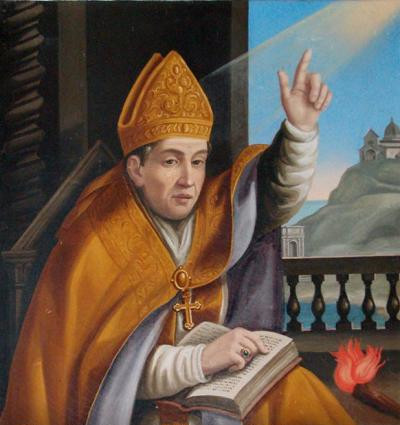
Saint of the Day January 9: St. Marcellino of Ancona
St. Marcellin of Ancona: History and Devotion of the Bishop Protector of the City of Marche
Name
St. Marcellin of Ancona
Title
Bishop
Birth
6th century, Ancona
Death
6th century, Ancona
Recurrence
09 January
Prayer
Almighty and eternal God, who called to preside over Your Church the holy bishop St. Marcellin who saved his city from burning, through his intercession grant that we, who venerate him as master and protector, may experience the sweetness of Your mercy. Through our Lord Jesus Christ, your Son, who is God, and lives and reigns with you, in the unity of the Holy Spirit, for ever and ever.
Roman Martyrology
In Ancona, St. Marcellinus, bishop, who, as Pope St. Gregory the Great writes, by divine power delivered his city from a fire.
The Saint and Mission
St. Marcellin of Ancona, venerated as the patron saint of the city in the Marche region, is a historical figure whose actions and dedication illuminate the path of Christian mission. Although not many specific details about his life are available, his reputation as a bishop and saint indicates a deep commitment to the spread of the faith and the spiritual and material well-being of his community. St. Marcellin’s mission is first and foremost rooted in his role as bishop. This position not only placed him as a spiritual leader, but also as a moral guide and sometimes as a mediator in times of conflict. His commitment to the Church and its people reflected the Christian mission to lead others to God, to nurture faith through teaching and example, and to promote justice and peace in the community. Moreover, the devotion and respect the faithful have for St. Marcellinus suggests that his life was an example of Christian virtues. As bishop and pastor of his people, he would have sought not only to administer the sacraments and teach doctrine, but also to live according to the values of the Gospel. His mission, therefore, was embodied in his daily life through acts of charity, prayer and service. St. Marcellinus is also remembered for his alleged role in protecting Ancona and its inhabitants. This aspect of his life highlights the Church’s mission to be a refuge for the needy and a source of hope in times of trouble. The figure of the saint interceding and protecting his city reflects the belief that God’s presence and grace work through the actions of his saints. St. Marcellin of Ancona represents the Christian mission lived out through dedicated service to the Church and community. His life invites us to reflect on how we can be instruments of God in the world, living by faith, courage and love in the circumstances of our daily lives. She reminds us that Christian mission is not just a matter of grand gestures, but can be achieved through our constant commitment to live the Gospel and serve others with humility and dedication.
The Saint and Mercy
Saint Marcellin of Ancona, venerated as bishop and protector, embodied mercy through his service and dedication to the community of Ancona. Although the details of his life may be shrouded in history and tradition, the veneration he continues to receive suggests the lasting impact of his ministry and his ability to reflect divine mercy in his pastoral leadership. Mercy in the context of St. Marcellin is manifested first and foremost in his vocation as bishop. In this capacity, he would assume responsibility not only to lead his diocese spiritually, but also to be a presence of comfort, guidance and support. The leadership of a bishop requires a balance of truth and love, justice and mercy. Marcellinus, through his service, would seek to embody these virtues, leading his community with compassion and wisdom. Moreover, the figure of St. Marcellin as the protector of Ancona suggests a deep sense of care and intercession for his people. Protection, in a spiritual sense, is a form of mercy, a way of extending God’s love and care to those in danger or distress. His reputation as a protector reflects the belief that, through the saints, God continues to work in the world, offering guidance, comfort and mercy. The memory of St. Marcellin is also an invitation to reflect on mercy as a community commitment. Mercy is not just an individual action, but a quality that can characterize an entire community. A bishop like Marcellinus, in his leadership and example, would have sought to promote a culture of mercy within his diocese, encouraging the faithful to care for one another, to forgive, to serve those in need, and to live according to the Gospel’s message of love and compassion. St. Marcellinus of Ancona represents the mission of mercy that is central to Christian life. His figure reminds us that we are all called to be instruments of God’s mercy through our leadership, service and commitment to our community. His memory invites us to live with an open heart, ready to receive and share divine mercy in every aspect of our lives.
Hagiography
Marcellinus lived in the 6th century, was born into a Boccamajore family, and was the sixth bishop of Ancona between 550 and 568, the year of his death. Marcellinus was considered a “holy man and full of zeal for the sanctification of the people.” The Roman martyrology reports the legend, handed down in writing by Pope Gregory I, that the bishop of Ancona, in the 6th century, saved his city from a fire: Marcellinus had gota and was obliged to be carried by servants. Once the fire broke out, the inhabitants could no longer smother it and…
